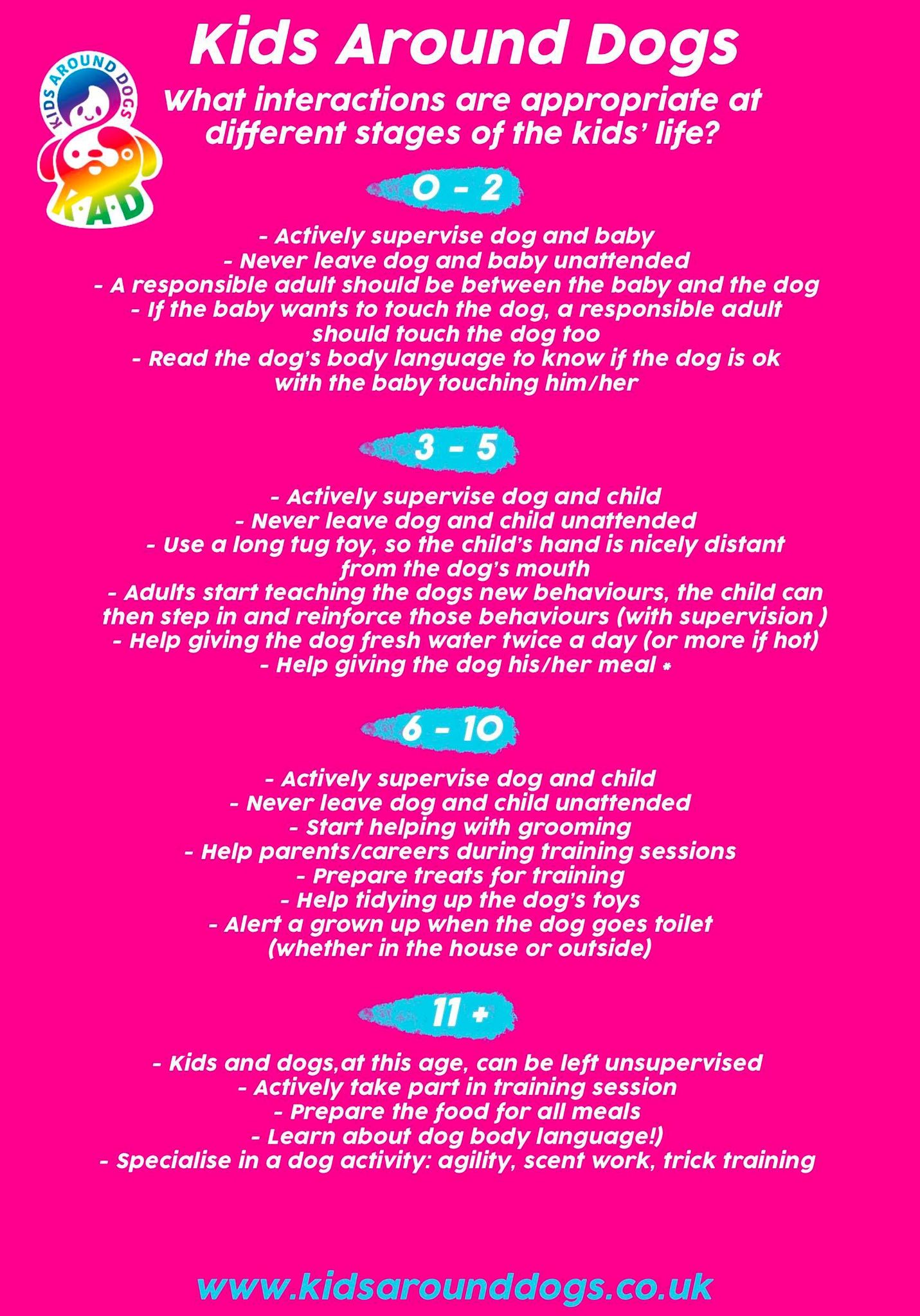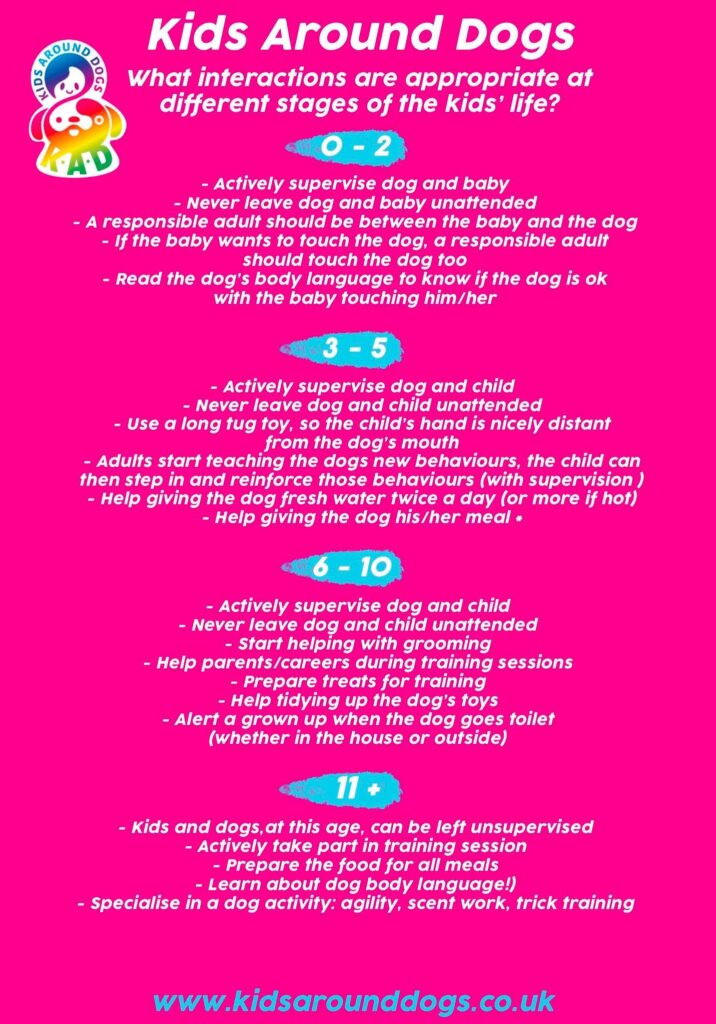Children's Development and Participation in Dog Ownership
Introducing children to dog ownership is a wonderful way to support their development while fostering a strong bond with animals. By involving children in the care and training of a dog, they learn responsibility, empathy, and patience. These experiences can also help build confidence and teach valuable life skills. When guided by adults, children’s participation becomes a positive and enriching experience for both the child and the dog, strengthening their connection and creating lasting memories
Safety and Respect for a Dog's Signals
Teaching children to recognize and respect a dog’s need for space is essential for their safety and the dog’s well-being. Dogs communicate through body language, and understanding these signals can prevent misunderstandings and ensure positive interactions.
For example, if a dog turns its head away, licks its lips, yawns, or moves away, it might be signaling discomfort or a need for space. Children should learn to respect these cues by giving the dog room to relax.
By fostering awareness and teaching children to approach dogs calmly and respectfully, adults can help create a safe environment where trust grows between the child and the dog. This not only prevents accidents but also strengthens the bond built on mutual respect.
Children have different abilities to understand and respond to a dog’s signals, depending on their age and individual differences.
Children’s ability to understand and respond to a dog’s signals can vary greatly due to individual differences. These differences include factors such as personality, past experiences, emotional maturity, and cognitive development. Some children may be naturally more empathetic or observant, while others might need extra support to recognize subtle cues from a dog.
It’s important to assess each child’s unique characteristics when determining their level of responsibility around dogs. This way, adults can ensure that children are given the right amount of guidance, helping them build a positive and safe relationship with the dog based on their individual capabilities.

